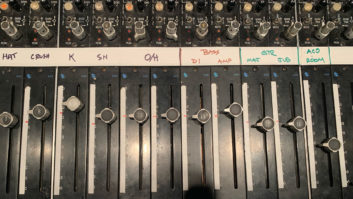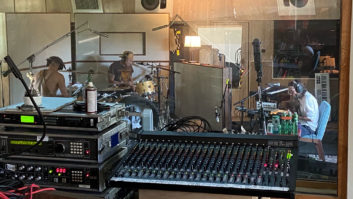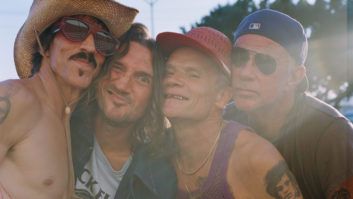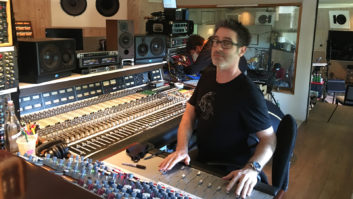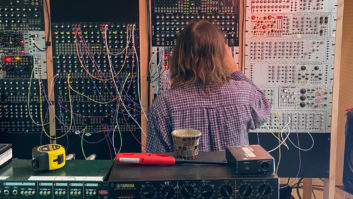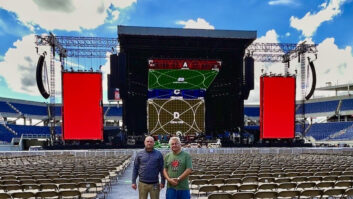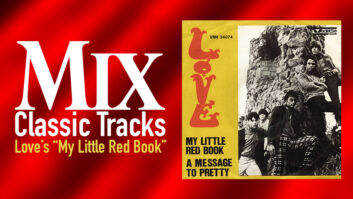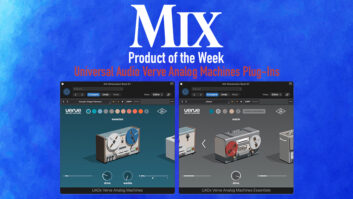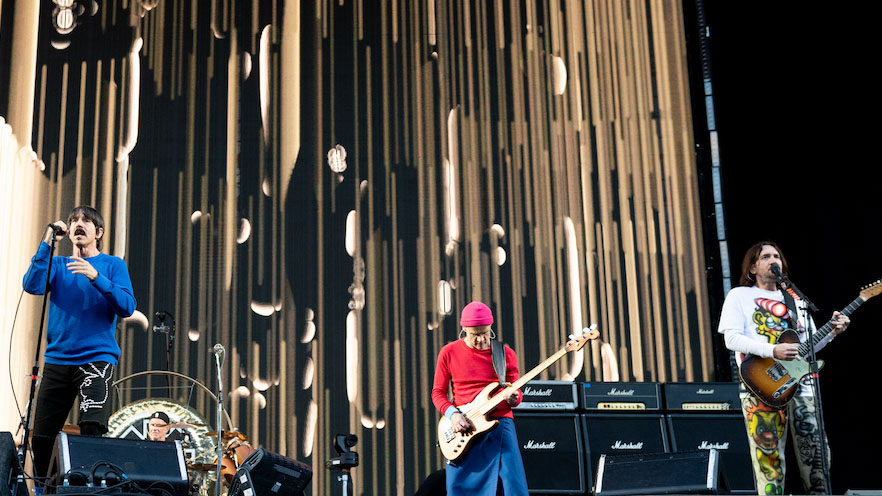
New York, NY (July 8, 2024)—On the road since 2022—when they dropped two hit double-albums within months of each other—Red Hot Chili Peppers have been tearing up stages around the world with their Unlimited Love tour, delivering a solid mix of the old and new nightly. That means serving up fan faves like “Give It Away,” “Californication” and “By the Way,” rolling through newer tracks like “Black Summer” and “Eddie,” and even slipping in covers ranging from Loggins & Messina to Public Enemy. Delivered in the band’s trademark energetic style, it’s a big show—big enough that both Eighth Day Sound and Clair Global collaborated on the sound. Despite the musical pyrotechnics onstage, however, one of the most surprising parts of the production is tucked away at front-of-house: A Fairchild 670 vacuum tube compressor.
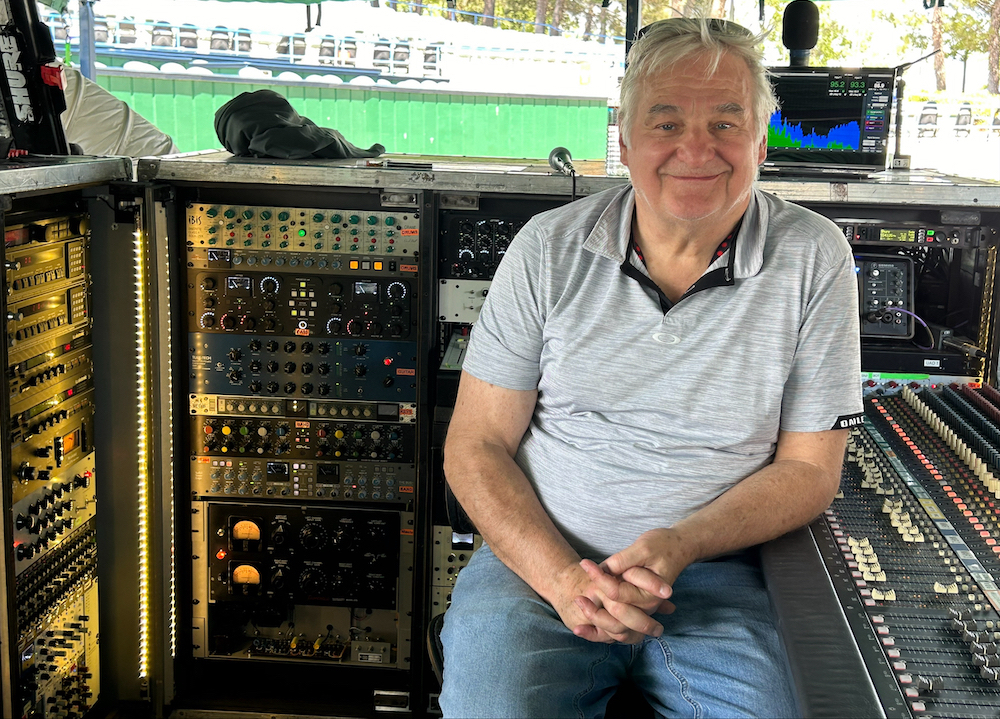
“I put the whole mix through the Fairchild,” says FOH engineer Toby Francis. “Originally, I tried it on the drums, I tried it on the band, and then ultimately put it across the stereo bus. My mastering chain is the Wes Audio ngTubeEQ, a four-way stereo EQ, into the Fairchild, into the Oven by Maor Appelbaum and Hendy Amps, and then into the P.A. That’s all new for this run, and the difference is shocking.”
Granted, it’s not an original Fairchild—the legendary 1950s unit that sells for north of $100,000 on the rare occasion that one hits the market—but it’s the first time one of the modern-day replicas introduced last year has hit the road. Meticulously built by Fairchild Recording Equipment, newly founded by Toni Fishman of Telefunken Elektroakustik, the re-creations are faithful to the originals, but that accuracy comes with a price tag that would make most pros keep it safely ensconced in a recording studio. Francis himself might’ve thought the same way, until earlier this year when the opportunity to use an original Fairchild live presented itself.
“I did a musical showcase with Kate Hudson,” he says. “I spent a couple of days with her band and said, ‘This needs some analog love.” I had a DiGiCo and could put an original Fairchild across the band bus, a Tube-Tech multiband across the vocal bus and an API 2500 compressor with the drums—and it gave it a completely different sound. We were all blown away, and it showed me what a Fairchild with live input sounds like, because most people that use them are mixing off of recorded material, which has a diminished dynamic range. When you hear what it does with full dynamic range in a live situation? I think it’s even more magical.”
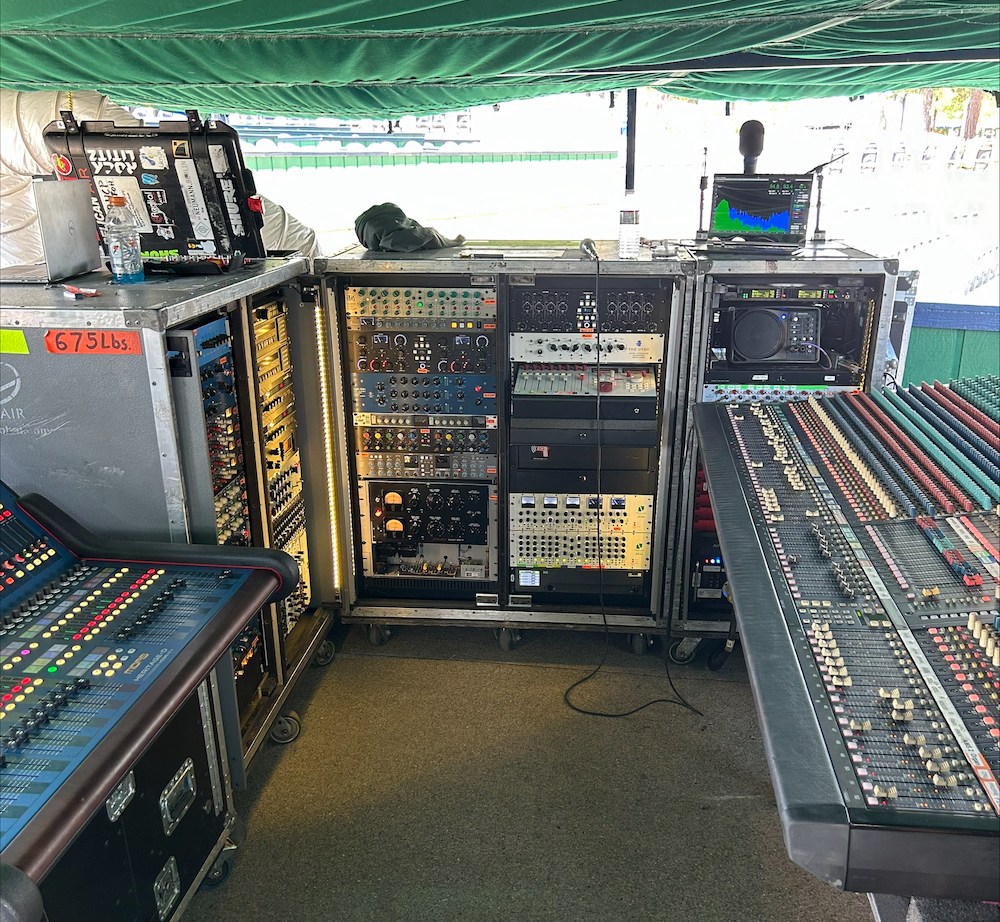
While some might say that the tube-based Fairchild isn’t up to the rigors of the road, Francis scoffs at the suggestion, pointing out that there are more than 60 tubes in his FOH racks now. “[People say] gear like that won’t travel; I’ve used tube gear like that most of my career, and it certainly does,” he says. “One of my AMS reverbs quit working at the last show, and I was just crushed, but that’s the worst experience I’ve had since we started [this tour in 2022], using the analog stuff that I’ve been told isn’t the right option and isn’t reliable. A lot of the people making those comments weren’t in this industry when we all did it that way.”
The FOH racks of analog gear weigh upwards of 800 lbs. each; between the sheer weight and shock mounting within the boxes, the various units are well protected, plus, Francis cracks, “Andrew Kastrinelis, my tech, babysits me, looks after all things Dante, and babies those racks—because he’ll have to fix them, so he’s proactive!”
Recording the Red Hot Chili Peppers’ Unlimited Love
The extensive racks are necessary, given that before the tour even began, guitarist John Frusciante and the rest of the band requested that the sound get an “analog approach.” With that in mind, the mix position is anchored not with a digital desk—although a Midas HD96 is carried as a backup—but instead a touchstone of the 2000s: a Yamaha PM5000.
“It was the last large-frame, live analog console Yamaha made,” says Francis. “It’s neutral, has tons of headroom, and it’s the reason there’s so much outboard gear on this tour; I approach this the same way you would on a digital console with a Waves server, except instead of choosing emulations, I chose the actual hardware pieces to get those sounds—and the hardware is much more effective than plug-ins.”
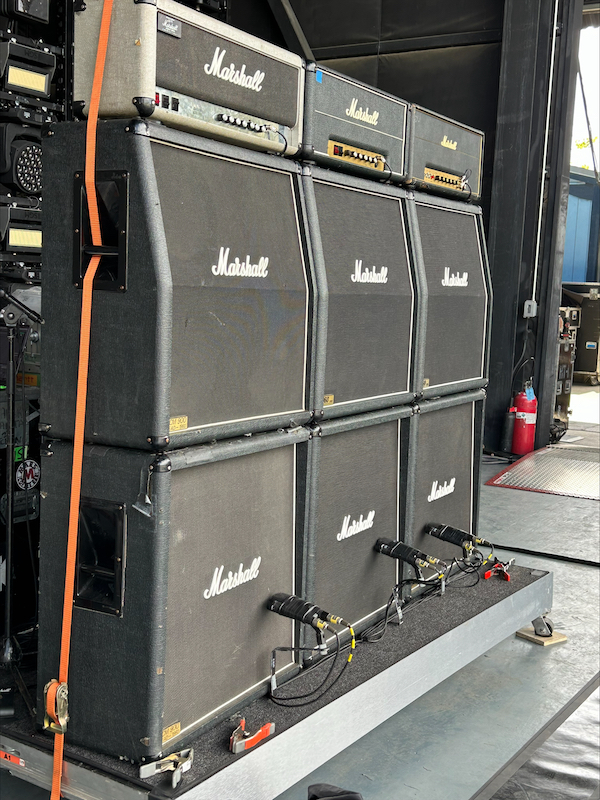
All that said, Francis is just as insistent that carrying all that high-end gear isn’t a “because they can” situation—even though, yes, they can—but merely because it’s the best way to honor the band’s “analog approach” request: “We’ve chosen some of the pieces based on how they sound in that situation. For instance, Flea gets a very unique bass sound that needs to be captured and put in the mix accordingly, and it’s the same with the guitars. Now, it’s a Strat and a Marshall and you need to make it present yet big? You can do that easily in the studio, but it’s a little harder live, so in this situation, a lot of that is the compression and the effect of the tubes and the transformers to bring the tone out.”
The crowds have been hearing those tones via d&b audiotechnik line arrays; while the journey began with stadium shows that required GSL rigs, the current run finds the Peppers playing sheds with KSL boxes in tow. “KSL gives you a little more versatility in the shape of the P.A., because we’re trying to keep it high and out of sightlines but still cover the audience the right way,” says Francis.
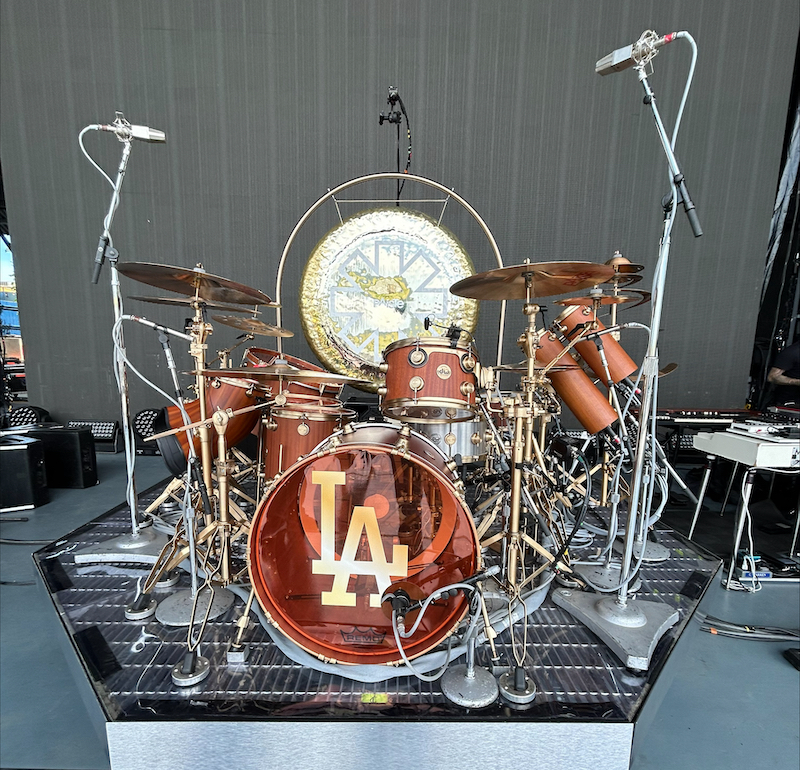
The tour has a high standard as to what constitutes “the right way,” as it is essentially carrying two full KSL rigs from Eighth Day Sound—not so that the systems can leapfrog each other, but instead to ensure that fans with lawn tickets get to hear the show properly. While the Peppers’ production has enough KSLs to handle typical main and side hangs in a shed, there’s an additional 48 boxes in tow that get used for delays as needed—and they get used a lot. Able to tie into the tour’s d&b Array Processing software, the result is a more cohesive-sounding show for the two-thirds of the audience listening on the lawn. Similarly, the tour has 30 d&b SL subs that are deployed at every festival the Peppers play in lieu of the venue’s subs, regardless of the house P.A.
The main reason for going with the d&b system, however, didn’t have to do with the crowds; it was the band. “They do not like to hear or feel the P.A. and it gets in the way of their performance, so we chose d&b because of the cancellation,” said Francis. “This is the first time I’ve toured with it, and I’ve become a big fan. The software, the Array Processing, every part of this system, when utilized properly, is phenomenal.”
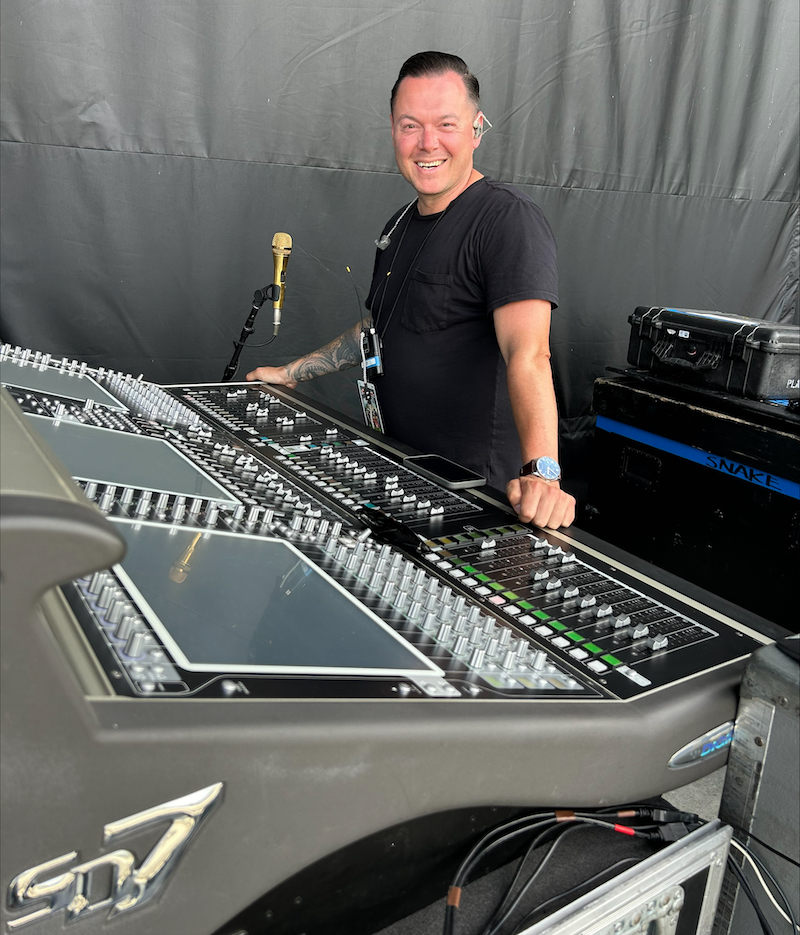
Ensuring that the Red Hot Chili Peppers are never distracted by sound matters is the name of the game. With that in mind, while a lot of the stage miking changed over the course of the tour, singer Anthony Kiedis’s Audix OM7 vocal mic did not. “It’s a great vocal mic, especially because of how he uses it, cupping it certain ways for certain effects. If we changed the mic, it would take him out of his comfort zone, so we elected to keep it the same. Flea and John’s background vocals, we changed to Sennheiser 935s because the pattern was tight enough; John sings in falsetto in front of two Marshall stacks, so finding something that would make his falsetto sound as big and full as it needs to despite that was important.” Elsewhere on stage, after time spent trying different options, the guitar and bass wound up getting captured with traditional Shure SM57s and Sennheiser 421s.
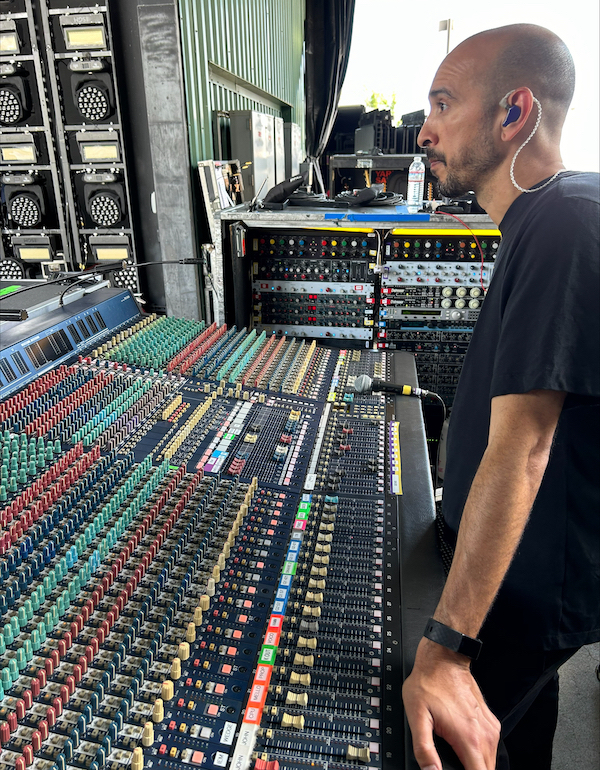
At stageside, monitor engineer duties are split between Dan Horton and Matt Andrade; Horton oversees a DiGiCo Quantum7, Waves servers, a UAD server and some outboard gear to provide mixes for Kiedis and drummer Chad Smith, while Andrade uses another Yamaha PM5000 and a variety of outboard gear to tackle monitors for Flea and Frusciante. In all, the tour’s audio crew numbers 13 people, as there’s also broadcast engineer Ethan Mates, using a Yamaha Rivage PM3; archiving mix engineer Bo Bodnar; systems engineer/crew chief Thomas Huntington; monitor tech Taka Nakai; audio tech Justin Smith; and P.A. techs Lachlan Cresswell, Christopher Jacobs, Abigail Dannewitz and Benjamin Olson.
When the tour finally ends later this month on July 30, 127 shows and nearly 26 months after it began, Francis’ copious FOH racks will head back to Clair Global and get taken apart, as his next gig promises to be far less analog-oriented: “With all this gear, this Peppers tour is the right situation for it. The next one I’m doing is a pop tour, and I’ll be taking an utterly, completely different approach—other than there will be a Fairchild!”
